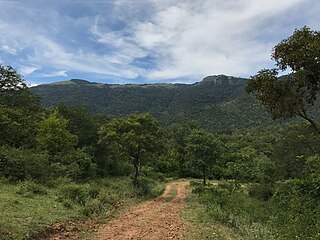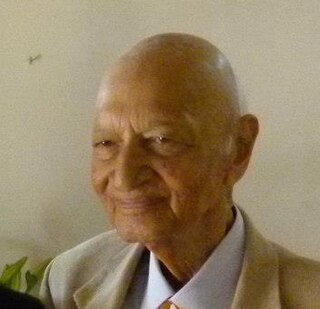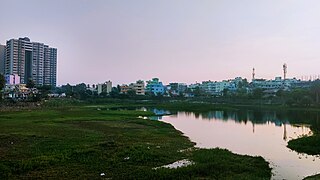
Bannerghatta National Park : is a national park in India, located In Bengaluru and Ramanagara District, Karnataka. It was founded in 1970 and declared as a national park in 1974. In 2002, a small portion of the park became a zoological garden, the Bannerghatta Biological Park.

Lalbagh Botanical Garden or simply Lalbagh, is a botanical garden in Bangalore, India, with an over 200-year history. First planned and laid out during the dalavaiship of King Hyder Ali, the garden was later managed under numerous British Superintendents before Indian Independence. It was responsible for the introduction and propagation of numerous ornamental plants as well as those of economic value. It also served a social function as a park and recreational space, with a central glass house dating from 1890 which was used for flower shows. In modern times, it hosts two flower shows coinciding with the week of Republic Day and Independence Day. As an urban green space along with Cubbon Park, it is also home to numerous wild species of birds and other wildlife. The garden also has a lake adjoining a large rock on which a watchtower had been constructed during the reign of Kempegowda II.

The Biligirirangana Hills or Biligirirangan Hills is a hill range situated in Chamarajanagar District in south-western Karnataka, at its border with Tamil Nadu in South India. The area is called Biligiri Ranganatha Swamy Temple Wildlife Sanctuary or simply BRT Wildlife Sanctuary. It is a protected reserve under the Wildlife Protection Act of 1972. Being close to the Eastern Ghats as well as the Western Ghats, the sanctuary has floral and faunal associations with both regions. The site was declared a tiger reserve in January 2011 by the Government of Karnataka, a few months after approval from India's National Tiger Conservation Authority.
Puttenahalli WS Lake also spelled as Puttanahalli Lake is a 10-hectare water body near Yelahanka, 14 km north of Bangalore.

The state of Karnataka in South India has a rich diversity of flora and fauna. It has a recorded forest area of 38,720 km2 which constitutes 55% of the geographical area of the state. These forests support 25% of the elephant population and 20% of the tiger population of India. Many regions of Karnataka are still unexplored and new species of flora and fauna are still found.
BTM Layout, an abbreviation of Byrasandra, Tavarekere and Madiwala Layout is a locality in Bengaluru, Karnataka, India located in the South and Southeast parts of the city between Hosur Road and Bannerghatta Road. It is one of the first layouts in Bangalore.

Hebbal Lake is located in the north of Bangalore at the mouth of National Highway 7, along the junction of Bellary Road and the Outer Ring Road (ORR). It was one of the three lakes created in 1537 by Kempe Gowda. Like most lakes or "tanks" in the Bangalore region it was formed by the damming natural valley systems by the construction of bunds. The spread of the lake in a study in 2000 was found to be 75 ha with plans for extending it to make up 143 ha.

Madiwala lake is one of the biggest lakes in Bangalore, India spread over an area of 114.3 hectare. The water in the lake was fit for drinking till the early 1990s. Since then it has become unfit for drinking due to industrial waste and sewage entering the waterbody. It has gradually become polluted.
Lakes and tanks in the metropolitan area of Greater Bangalore and the district of Bangalore Urban are reservoirs of varying sizes constructed over a number of centuries by various empires and dynasties for rainwater harvesting. Historically, these reservoirs were primarily either irrigation tanks or for the water supply, with secondary uses such as bathing and washing. The need for creating and sustaining these man-made dammed freshwater reservoirs was created by the absence of a major river nearby coupled with a growing settlement. As Bangalore grew from a small settlement into a city, both of the primary historical uses of the tanks changed. Agricultural land witnessed urbanization and alternate sources of water were provisioned, such as through borewells, piped reservoir water and later river water from further away.

Kaggalipura is a village along Kanakapura Road on the outskirts of Bangalore, in the southern state of Karnataka, India. Kaggalipura is located on the Bangalore-Coimbatore National Highway 948, around 20 km south of Bangalore. The village is named after the Kaggali tree, which grows in abundance locally. The village was established after clearing several Kaggali trees from the area, hence the name Kaggalipura.

Agara lake is an 80-acre lake located in Agara, Bangalore. It is part of the Varthur lake series. Madiwala Lake is upstream while Bellandur Lake is downstream. Inter-lake connections have seen fragmentation and urbanisation.
Yelahanka Lake is a water body near Yelahanka, a suburb of Bangalore.

Zafar Rashid Futehally was an Indian naturalist and conservationist best known for his work as the secretary of the Bombay Natural History Society and for the Newsletter for Birdwatchers a periodical that helped birdwatchers around India to communicate their observations. Awarded Padma Shri by the Government of India in the year 1971, Zafar Futehally was also honoured with Dutch order of merit the Order of the Golden Ark in 1981 and Karnataka Rajyotsava award by the Government of Karnataka in 1983.

Puttenahalli lake is a small, restored freshwater lake located in JP Nagar 7th Phase, South Bangalore. The area of the lake is about 13 acres. The primary water sources are rain and surface water diverted to the lake through channels. The lake is currently maintained by Puttenahalli Neighbourhood Lake Improvement Trust (PNLIT) . The lake was on the brink of extinction, but due to the efforts of PNLIT, is now a haven for bird-watchers and on its way to being completely restored.

Bannerghatta Biological Park, also known as the Bannerghatta Zoo, is a zoological garden located in the city of Bengaluru. It was initially a small zoo and picnic corner within Bannerghatta National Park (BNP) which was started in 1974. The bifurcation of the Biological Park and the National Park took place in 2002. The Bannerghatta Biological Park covers a total area of 731.88 hectares and includes a zoo, safari park, butterfly park and rescue centre. The Zoo Authority of Karnataka, the University of Agricultural Sciences, Bangalore, and the Ashoka Trust for Research in Ecology and Environment (ATREE), Bangalore, are collaborating agencies. For the convenience of the general public, the Governing Council of Zoo Authority of Karnataka had decided to rename Bannerghatta Biological Park as 'Bengaluru Bannerghatta Biological Park' (BBBP).
The Lake Development Authority (LDA) in Bangalore, Karnataka, and its successor the Karnataka Lake Conservation and Development Authority (KCLDA) were formed in 2002 and 2015 respectively. Karnataka Tank Conservation and Development Authority (KTCDA) under the Minor Irrigation Department became the superseding agency.

Gandhi Krishi Vigyana Kendra (GKVK), is one of the campus and administrative headquarters of UAS. It is located in Bengaluru Suburb Yelahanka, Karnataka, India.

Sethuram Gopalrao Neginhal was an Indian forest official and conservationist who is credited with generating the green cover around the Indian city of Bangalore leading to the city being referred to as The Garden City. He was associated with the launch of Project Tiger and led wildlife conservation actions including development of the Bandipur Tiger Reserve. In addition to being an expert on wildlife and plant life he was an awarded wildlife photographer.














